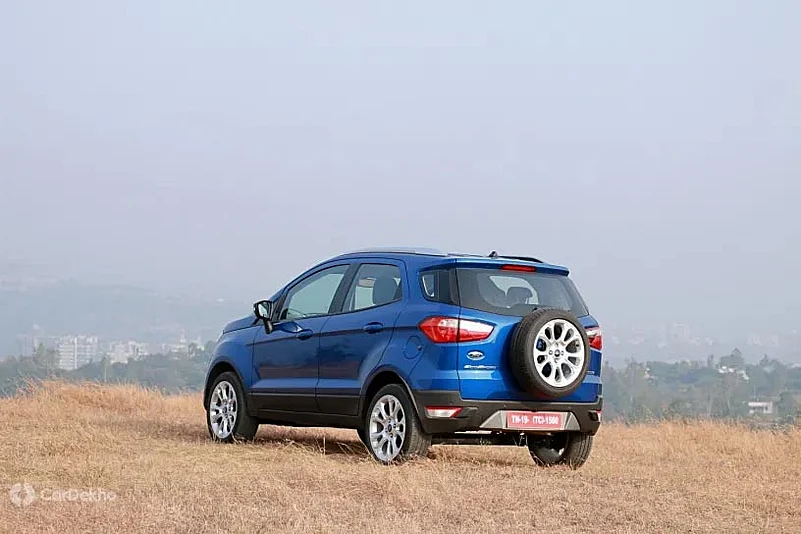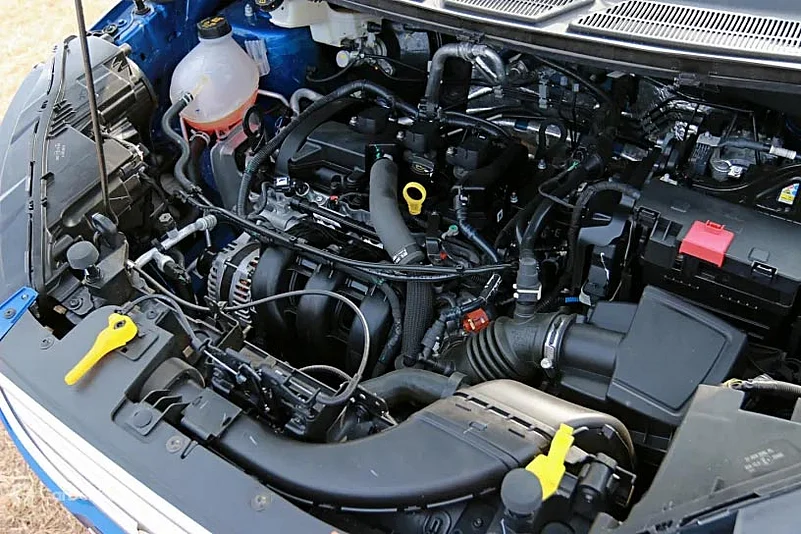The Hyundai Venue is the most recent entrant in the sub-4m SUV segment. It goes up against some stiff competition from the likes of the Maruti Suzuki Vitara Brezza, Tata Nexon, Mahindra XUV300 and the Ford EcoSport too. The Ford was the one to create this segment when it was launched in India in 2013, followed by the Brezza in 2016.
Both the Venue and EcoSport are available with relatively premium petrol-automatic variants compared to AMTs offered by rivals. We recently had the chance to test the Venue’s petrol-AT for its real-world performance and fuel efficiency. The EcoSport’s petrol-AT had already been tested earlier, so let’s see how their results compare. We’ll start by taking a look at engine-specifications and dimensions of both:
Advertisement



Dimensions


The Hyundai uses a smaller, turbo-charged engine which offers more torque and uses a more sophisticated dual-clutch transmission. Meanwhile, the Ford has a larger engine which produces slightly more power and uses a torque convertor.
In terms of size, the EcoSport is 3mm longer with a 19mm longer wheelbase than the Venue and it’s 42mm taller too. The Venue, however, is 5mm wider than the Ford.
Here’s how both cars performed in our acceleration tests:


The Venue was clearly quicker in every acceleration test here, showing that the 7-speed DCT is better for the job than the 6-speed AT. Ford’s sub-4m SUV was 1.27 seconds slower to 100kmph, 0.44 seconds slower to complete a quarter mile and at a slower speed, and 0.85 seconds slower to accelerate from 20-80kmph without any inputs other than flooring the pedal. A decisive win for Hyundai’s sub-4m SUV with the turbo-petrol engine then.
Advertisement
Next, let’s take a look at the results from the braking tests:


Both use the same brake setup with disc brakes up front and drum brakes at the rear. However, the EcoSport wins in both our braking tests by stopping in a shorter distance than the Venue. When coming to a halt from 100kmph, there’s not much between them as the Ford took 42.78 metres while the Hyundai took an extra 0.14 metres. It was a more conclusive win for the EcoSport when stopping from 80kmph as it came to a halt 1.79 metres before the Venue, which took 26.69 metres.
Lastly, we compared the efficiency figures of both cars from our tests in real-world driving conditions:

A mixed result here as the larger engine of the EcoSport makes it considerably more thirsty in city driving conditions than the Venue’s 1.0-litre turbocharged unit. However, at highway speeds, the Ford powertrain appears to be more at ease, being more fuel efficient than the Hyundai.

But nobody uses their car for only city or only highway driving. So here’s how the efficiency of the two petrol-automatic sub-4m SUVs will average out in different circumstances:


When it comes to the average fuel efficiency delivered, the petrol-automatic variant of the Hyundai Venue takes a comprehensive win over the Ford EcoSport. If your driving is evenly split between city and highway conditions, then the Venue does an extra 2.73kmpl over the EcoSport. In the case of highway driving, the Ford’s mileage is nearly 2kmpl lesser than Hyundai’s 14.44kmpl. Reversing the situation to predominantly city driving, the Venue does 11.34kmpl, which is around 3kmpl more than the EcoSport.
Advertisement
Source: cardekho.com




















